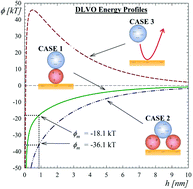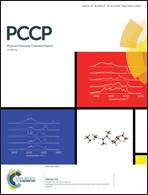Hematite/silica nanoparticle bilayers on mica: AFM and electrokinetic characterization
Abstract
Quantitative studies on self-assembled hematite/silica nanoparticle (NP) bilayers on mica were performed by applying scanning electron microscopy (SEM), atomic force microscopy (AFM), and streaming potential measurements. The coverage of the supporting hematite layers was adjusted by changing the bulk concentration of the suspension and the deposition time. The coverage was determined by direct enumeration of deposited particles from AFM images and SEM micrographs. Afterward, silica nanoparticle monolayers were assembled under diffusion-controlled transport. A unique functional relationship was derived connecting the silica coverage with the hematite precursor layer coverage. The formation of the hematite monolayer and the hematite/silica bilayer was also monitored in situ by streaming potential measurements. It was confirmed that the zeta potential of the bilayers was independent of the supporting layer coverage, exceeding 0.15. These measurements were theoretically interpreted in terms of the general electrokinetic model that allowed for deriving a formula for calculating nanoparticle coverage in the bilayers. Additionally, from desorption experiments, the interactions among hematite/silica particles in the bilayers were determined using DLVO theory. These results facilitate the development of a robust method of preparing nanoparticle bilayers with controlled properties, with potential applications in catalytic processes.



 Please wait while we load your content...
Please wait while we load your content...